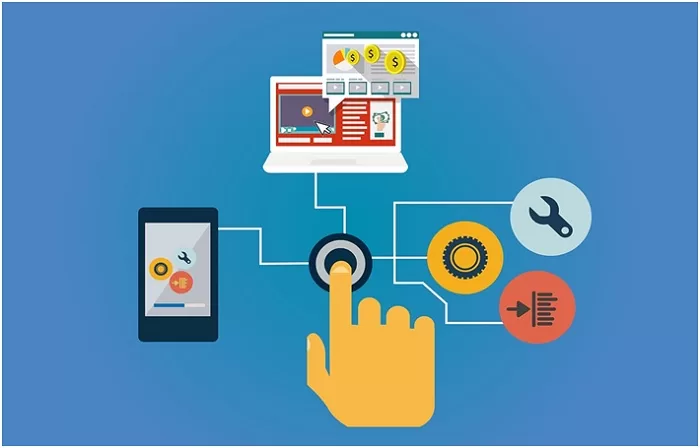Technology
How E-Commerce Trends Spur Innovation in Manufacturing

E-commerce, once a fledgling sector, now dominates the global market. Yet, few realize its rippling impacts, particularly on an unsuspecting titan: manufacturing.
As consumer demand for quick, reliable, and cost-effective delivery of goods continues to strengthen, manufacturers must now innovate to meet this challenge.
In this post, we dissect the relationship between these two spheres, detailing how the digital revolution is driving progress in the realm of production.
E-commerce Growth and Demand for Efficient Manufacturing
The e-commerce sector has experienced speedy expansion over the years, modifying consumer patterns and market dynamics. In fact, a Statista report suggests that worldwide e-commerce sales are set to touch $8.1 trillion by 2026. This extraordinary growth is creating massive pressure on the manufacturing industry, underlining the requirement for more effective and scalable manufacturing techniques.
Increased product demand means manufacturers must produce faster. To keep up, they’re adopting innovative production methods and technologies that boost productivity while maintaining quality standards.
Production Planning Scheduling Advancements
In manufacturing, production planning scheduling is essential for ensuring the efficient use of resources and timely product delivery. It involves managing the workflow, resource allocation, and lead times.
With the advent of advanced technologies and automation, production planning scheduling has seen tremendous improvement. For instance, Manufacturing Execution Systems (MES) and Enterprise Resource Planning (ERP) software enable real-time tracking, better forecasting, and automated scheduling. These tools help reduce lead times, increase efficiency, and streamline operations.
The Rise of Smart Manufacturing
Smart manufacturing is a concept that’s revolutionizing the industry. It refers to the use of advanced technologies like the Internet of Things (IoT), Artificial Intelligence (AI), and robotics to optimize manufacturing processes.
E-commerce trends such as fast delivery times and high product variety are driving the adoption of these technologies. For instance, IoT devices provide real-time data on equipment performance, enabling predictive maintenance and reducing downtime.
Meanwhile, AI algorithms can optimize workflows, and robotics can automate repetitive tasks, all leading to increased efficiency and reduced costs.
Sustainability and Eco-friendly Practices
The increasing importance of sustainability and eco-friendly practices in manufacturing is another trend influenced by e-commerce. Many consumers now prioritize environmentally friendly products, pushing manufacturers to adopt greener technologies and processes.
But don’t take our word for it. Here are a few facts worth knowing.
- According to the Capgemini Report, smart manufacturing could add $1.5 trillion to the global economy by 2030, underscoring its significant economic potential.
- The Internet of Things (IoT) has a pivotal role to play in this revolution. Businesses are leveraging IoT for real-time data on equipment performance, contributing to predictive maintenance. According to a 2023 study by McKinsey, predictive maintenance can reduce machinery downtime by up to $630 billion by 2025.
- The market for IoT in manufacturing is on a robust growth trajectory. According to a forecast from Markets and Markets, the market size of IoT in manufacturing is projected to undergo an astonishing growth spurt from $50 billion in 2021 to a staggering $87.9 billion by 2026 at a Compound Annual Growth Rate (CAGR) of 11.9% during the forecast period.
- Artificial Intelligence (AI) is another cornerstone of smart manufacturing. Through AI algorithms, businesses can optimize workflows, making them more efficient. Gartner predicted that by 2024, up to 40% of big enterprises would invest in AI-powered software for operational and decision-making prowess.
- Robotics, traditionally used for repetitive tasks, are becoming more sophisticated, contributing to increased efficiency and reduced costs. The International Federation of Robotics reported that industrial robot installations are expected to grow by 10% annually from 2020 to 2021, demonstrating the increasing reliance on automation.
In response, manufacturers are implementing practices such as waste reduction, energy-efficient operations, and the use of sustainable materials. Technologies like digital twins and energy management software can help manufacturers achieve these goals and reduce their environmental footprint.
Customization and Personalization
E-commerce trends are also driving demand for product customization and personalization. Customers increasingly seek unique, personalized products, and manufacturers must adapt to meet this demand.
Manufacturers are doing this through 3D printing, which enables them to quickly produce custom parts and products. Digital twins, a technology that creates virtual replicas of physical objects, can also be used for more accurate simulation and experimentation. This leads to faster product development cycles without the need for manual testing.
Some Final Thoughts
The intersection of e-commerce trends and manufacturing innovation is an exciting space teeming with opportunities. From efficient manufacturing processes and advanced production planning to the rise of smart manufacturing and eco-friendly practices, these trends are reshaping the manufacturing landscape. In order to stay ahead of the curve, businesses must embrace new technologies and optimize their operations.
For manufacturers, staying informed about these trends and their implications is essential. This enables them to adjust, innovate, and remain competitive in the dynamic environment of e-commerce and manufacturing.
The future of manufacturing is here, and it’s digital, efficient, sustainable, and customer-centric.




















































